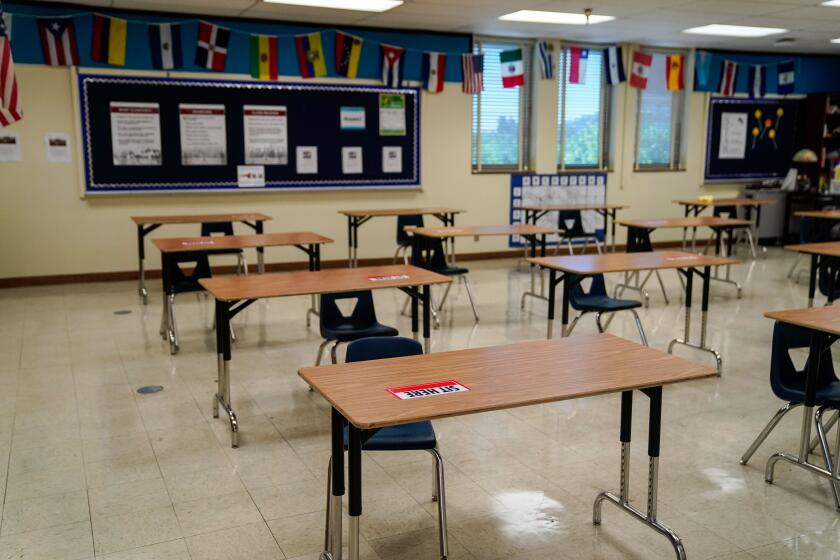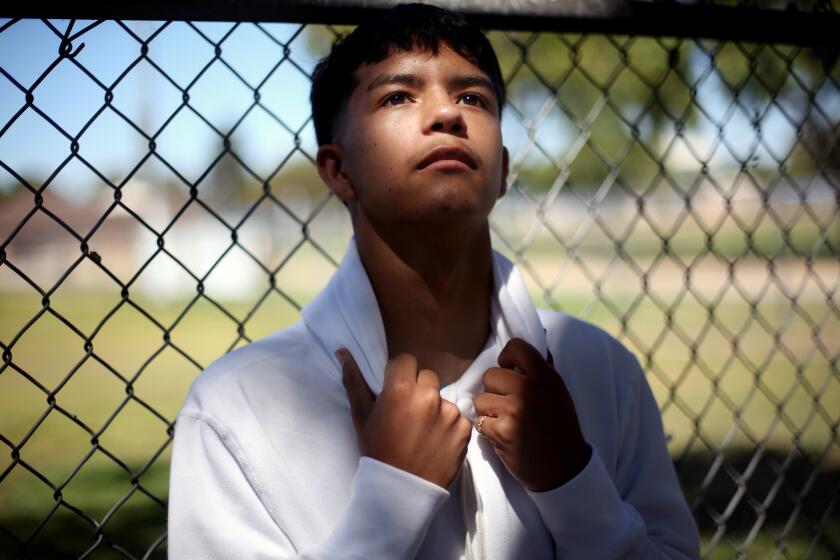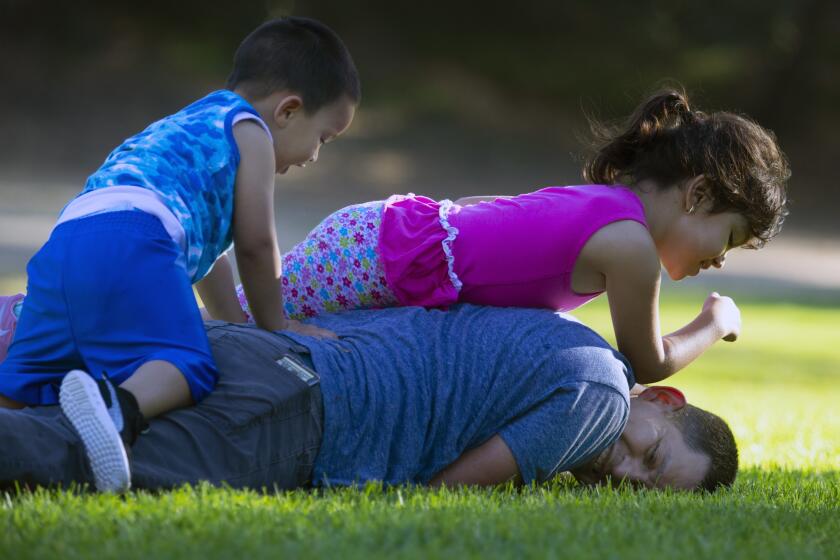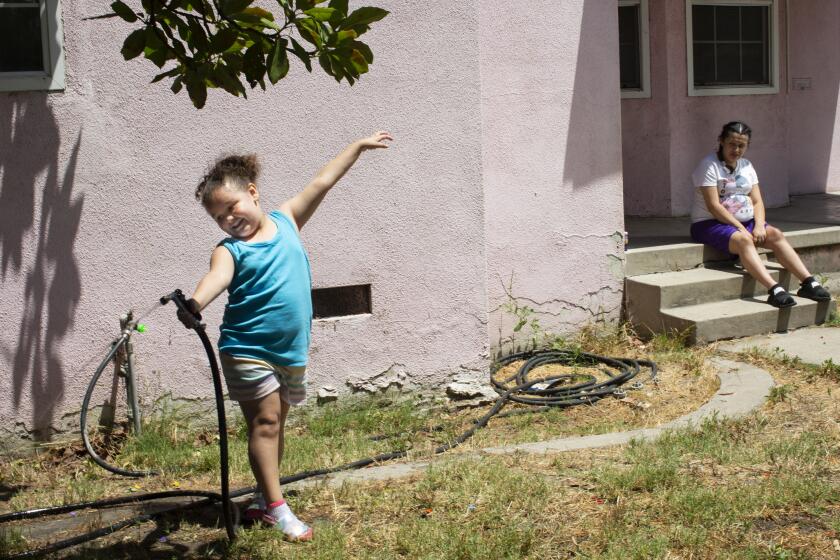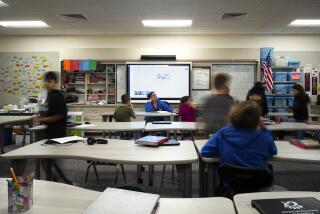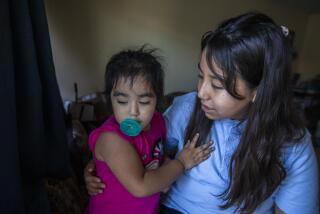How to adapt special education to the remote-learning reality
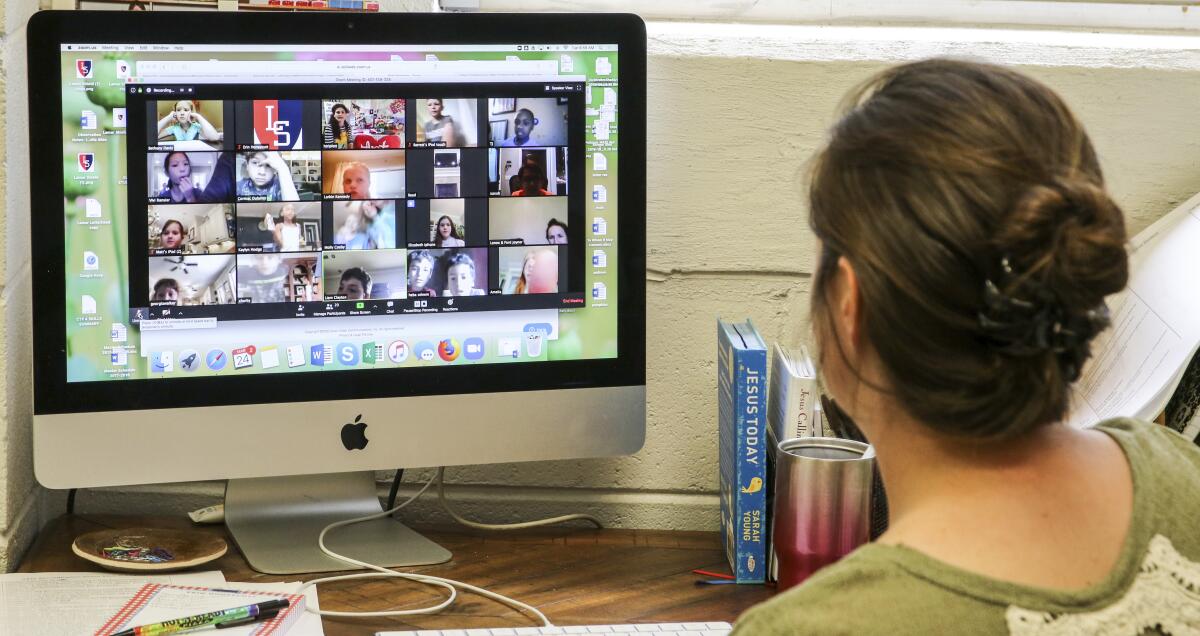
When the pandemic forced schools to transition to remote learning in the spring, some families struggled more than others. Families of students in special education programs were suddenly expected to adapt to an online learning environment that was often inaccessible to children with a variety of physical, emotional or developmental needs.
As another period of distance learning dawns, we asked parents, educators and service providers for recommendations and advice about special education. Here’s what they said.
Know your rights
Although it may seem obvious, parents should know that schools must still provide their students with special education. Denise Stile Marshall, chief executive of the national Council of Parent Attorneys and Advocates, which protects the civil rights of students with disabilities, said she received an outpouring of calls in March from parents — especially from California — struggling to get their school districts to accommodate every student’s needs.
Some school districts, Marshall said, completely suspended special education courses until the closures ended. Marshall said that is illegal under the Individuals with Disabilities Education Act, the law that makes about 7 million students in the United States eligible for special education. Every child, regardless of need, is entitled to a “free, appropriate public education.”
“The pandemic and the closures that resulted from it have not waived any requirements or obligations under the law,” Marshall said. “The districts are still supposed to be providing what the student needs.”
If a school district is not meeting its requirements, Marshall said, caregivers should write their concerns down to create a record. Any data that families can collect on any student — including video of the child, school work or other documentation — can be helpful for tracking the student’s progress or regression. Then, she said, get into contact with the school district and the student’s individualized education program coordinator.
The new school year of remote learning will bring unique challenges. Here are guides to help parents of school-age children navigate remote learning, as well as recent updates about education in Southern California.
Adjust expectations
Don’t be afraid to change your child’s learning goals for the year.
“When we talk about expectations for the coming year, we need to listen to students and families about what works,” said Beth Lasky, who just completed her 40th year as a special education professor at Cal State Northridge. and previously taught in the Los Angeles Unified School District for 13 years.
That may mean reevaluating a student’s individualized education program, or IEP. Set up a meeting with the child’s IEP team to assess the goals for the year. They might not be the same as last year — and that’s OK, said Erica Howell, co-director of the Center for Autism at Cal State Fullerton.
“We might say, ‘This goal was great, and it was really meeting an important skill, but we’re not going to be able to target this in the home environment as we could in the school environment,’” Howell said. “But instead, ‘Hey, here’s another skill and goal that we can really develop. ’”
The IEP may require more intense services to counter an achievement gap caused by last year’s sudden shift to virtual learning. If some in-person services such as physical or occupational therapy are not available now, COPAA’s Marshall recommends setting an agreement for when the service can resume.
“I just want to caution parents: Everybody’s tempted to think ... that something must be different because of COVID,” she said. “Perhaps, if the team decides that. But ... it really is team dependent.”
The goals may remain the same, but the way each student achieves them looks different. For example, perhaps one student answers a question with a written response while another creates a video, draws a picture or responds verbally.
“They can still be expected to demonstrate a common core standard, but we give them options or choices of how they’re going to demonstrate that understanding or ability,” Lasky said.
Lasky also recommended setting up an informal meet-and-greet with teachers to familiarize them with the student’s family, home life and learning environment. Opening that relationship early on will reap returns later, she said.
“We know from research that when teachers connect with students and their experiences and their family life, that kids tend to remember and they learn more,” Lasky said.
However the child performs, Howell recommends responding to any positive behavior with praise.
“We get a salary for our jobs; that reinforces us,” Howell said. “We want to keep our kiddos in mind that it’s not easy, and we want to give that reinforcement to keep them engaged.”
Times survey finds profound disparities in distance learning between children attending schools in high-poverty areas and those in more affluent ones.
Your kid needs friends
Whether during school time or after the virtual bell rings, kids will need time with friends. Parents and teachers recommend intentionally setting aside some social time.
Children may especially enjoy connecting with others similar to them. For the last six years, Tustin parent of four Marsha Hansen has sent her 16-year-old son, who lives with a congenital heart disease, to Camp del Corazon on Catalina Island. Every year, Hansen said, she noticed her son returning with renewed confidence and a stronger sense of self after spending a week with nearly 500 other children “with a scar running down their chest.”
This year, the camp went virtual. Campgoers interacted with one another using video chats and Padlet, a child-friendly social media wall where people can post pictures and sticky notes. The virtual experience may be different, but don’t underestimate your children’s ability to have fun, Hansen said.
“I heard laughter ... and screams and shouts and joy coming from his bedroom,” she said. “He was having a great time as a 16-year-old boy on a Zoom call with a bunch of other 16-year-old boys at a virtual camp. I would have never guessed that.”
Mother Gretchen Miner said her 10-year-old loved making friends at Camp del Corazon so much that Miner and a few parents formed a Facebook group so the children can stay connected through the school year with Friday night virtual dance parties, online bingo games and even Zoom hide-and-seek.
Math homework and history reading can mostly be done alone. But social and emotional learning requires interaction. Here’s how parents can help their children during remote schooling.
More parental involvement might be needed
For a child struggling with a speech issue, for example, speech-language pathologist Jimmy Nguyen is frank: Therapy from home is going to be hard and require more parental involvement. Adults at home may need to monitor the student to make sure they are logged on and paying attention.
“In the beginning, it can be very difficult, because parents don’t have that knowledge or that education that we work on. We’re able to dissect and evaluate these little pathways on how to facilitate it,” Nguyen said.
Still, he said, there’s hope: “For parents, it’s just tweaking their routine a little to [achieve] those goals and making them a part of their skill set.”
For example, he often advises families that a simple trip to the grocery store can turn into a lesson. Analyzing a box of cereal can help with language skills, while adding up calories on a candy bar can teach simple math. Playing board games as a family is another way to engage a child and improve a host of skills — social, analytical, critical thinking and sometimes even math. Interactive lessons — which he recommended finding on websites Nearpod and N2Y — can also facilitate learning.
California has mandated that school districts continue to provide special education to students with disabilities during the pandemic, but has waived key timelines that allow students to receive assessments and services quickly.
Keep a schedule — as best you can
Educators and emphasized the importance of making and maintaining a schedule.
“Kids, especially with special needs, need that consistency,” El Segundo High School science teacher Tiffany Maisonet said. “They know that every day, no matter what, 10:30 is when they should log in.”
Keeping a schedule doesn’t necessarily mean following a typical six- or eight-hour school day.
“Expecting kids to sit from 8 to 3 online all day is not realistic,” said Lasky, the special education professor. “It’s not realistic for people that don’t have disabilities, and it’s not realistic for kids with disabilities.”
Mix up the traditional schedule by adding in plenty of breaks for small rewards, like a snack, a few minutes of TV time or a romp outside. Some educators suggested creating an incentive chart of different rewards, so the child gets to choose how to spend the break. But, they acknowledged, some children won’t be motivated by charts. Listen to your child to know how best to incentivize them.
“What we don’t want is students sitting down all day at the computer and making parents check off every task until it’s done,” Howell said. “We want there to be a balance so we keep children in the framework for learning.”
Theresa Quary, a coordinator at CSUN’s Family Focus Resource Center and the founder of a support group for Black and African American families of children with special needs, suggested taking notes on which rewards and schedules seem to work for your child. She also suggested setting a timer — when it goes off, reading time is over and playtime can begin.
As anyone with children knows, the schedule will change. Don’t beat yourself up, and do your best to get back on schedule tomorrow.
You and your kids can do it
Families are not the only ones struggling. Teachers and educators are navigating the virtual environment too, and everyone is learning alongside the students. Here are some of their words of advice.
Hansen, mother of four: “Give the kids credit because they’re smart. This is a super, super smart generation. They have the whole world at their fingertips. They’re not going to get behind.”
Nguyen, speech-language pathologist: “It’s good also to remember [that children] ... don’t have those social skills. They don’t have the patience that we do. They don’t have the critical thinking skills that we have. … There is going to be that learning curve.”
Quary, coordinator at CSUN’s Family Focus Resource Center: “We have to come at it with a different approach and just say, ‘Families, do what you can do. It’s not going to be the same. We know that. But do what you can do.’”
Miner, mother of five: “We’re all being asked to do something that we’re not equipped for, and nobody’s equipped for. We’re all going to have to figure out as we go and give each other the grace and the space to meet everybody’s needs the way they are.”
More to Read
Sign up for Essential California
The most important California stories and recommendations in your inbox every morning.
You may occasionally receive promotional content from the Los Angeles Times.
